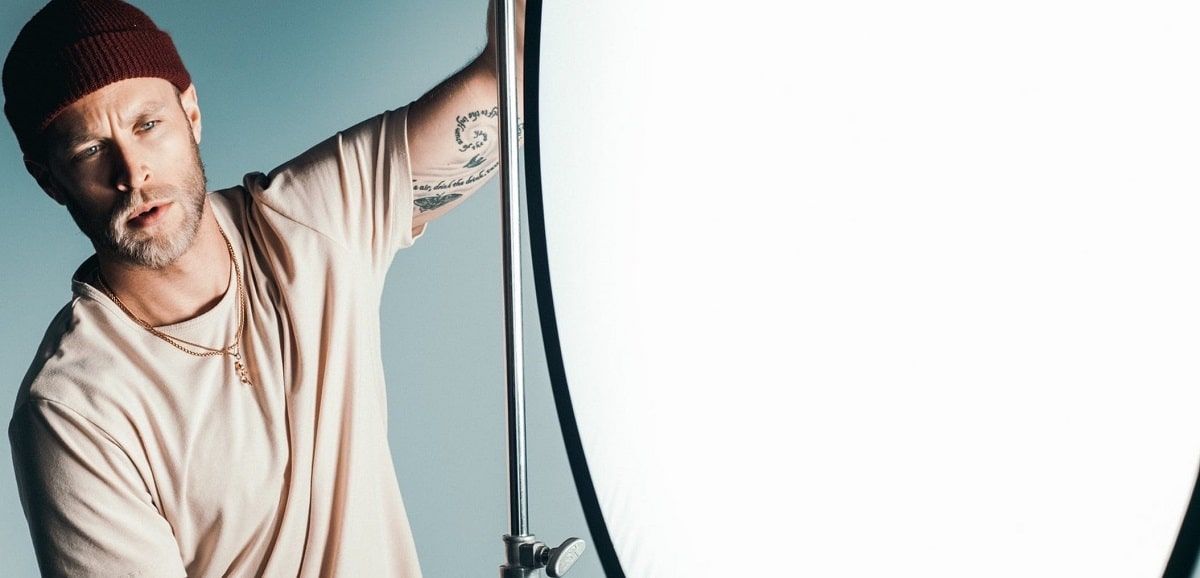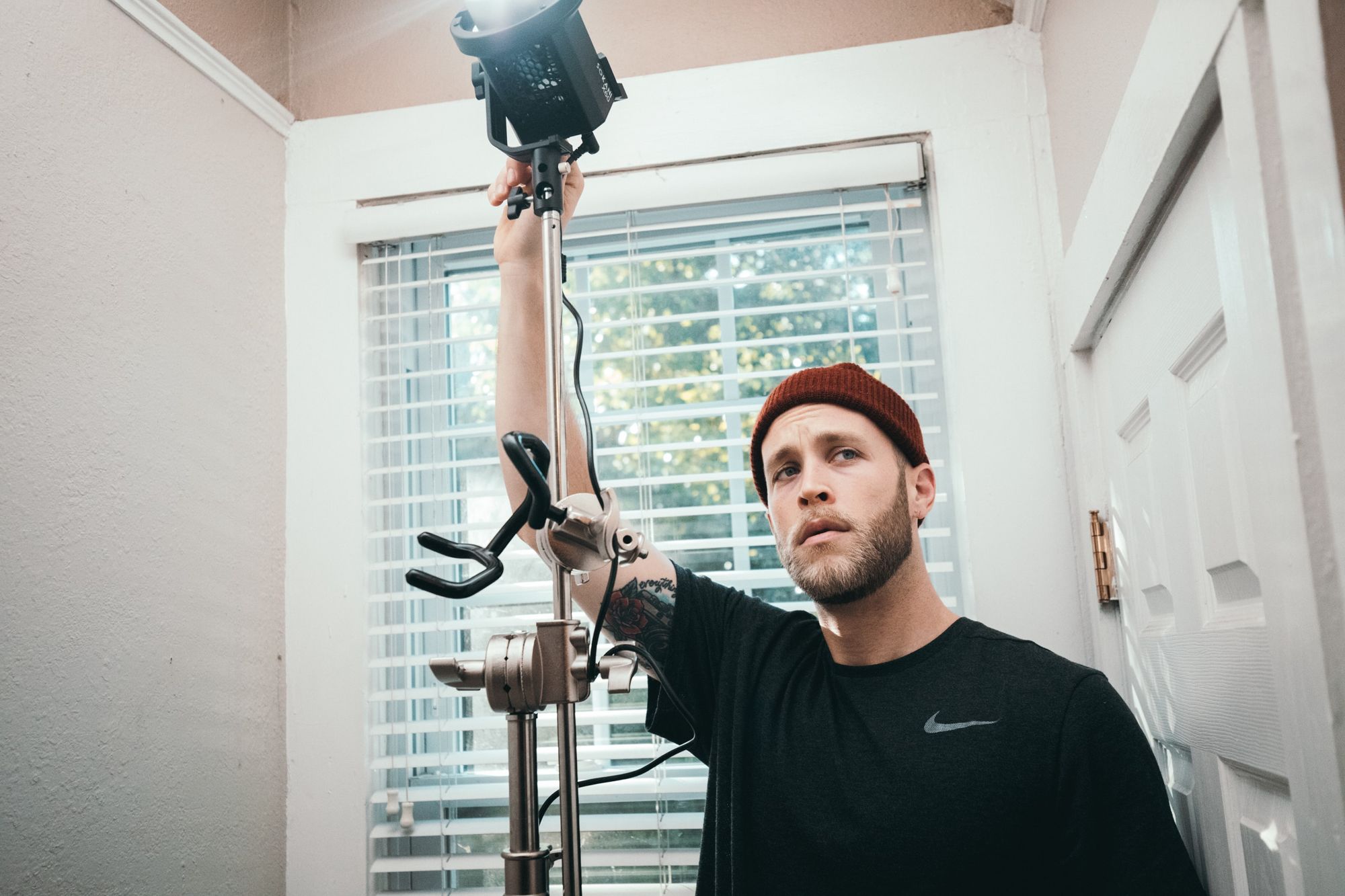What’s a Gaffer? Job Description & Breakdown of the Responsibilities
Rent film gear from local filmmakers.

Rent film gear from local filmmakers.
Film production is not possible without the work and expertise of the gaffer.
It's a highly technical and taxing role, but if you want to know more or how to become one, you've come to the right place.
What is a gaffer?
The gaffer is a chief lighting technician, designing and sometimes executing the lighting plans in a production.
They are the head of the electrical department on a production set.
Their role is sometimes derived from the director of photography (DP), who might design the light plan, and then the gaffer will put this into action.
Therefore the gaffer's creative directory might come from the DP, or they could be given conceptual directions and have to work the rest out on their own.
Not as simple as it sounds, right?
Fun fact: The name came from a long metal pole called a 'gaff', used to adjust the lighting equipment on set!
What does a gaffer do on a film set?
So you want to become a film gaffer, eh? Well, first read about what you're in for on the day-to-day before you start cramming in all of the technical knowledge.
First, the gaffer must consult with the DP and the director so they can express visions for the lighting and then gather equipment and crew to make that setup happen, within the production's budget, of course.
When ready for shooting, the gaffer's job is to reposition and tweak the setup per the DP's requests. This might change during filming too, and it's the gaffer's job to make sure the equipment can manage all the tweaks and settings the production requires.
They may also use tools, such as a reflective pair of glasses to determine the sun's position (if shooting externally) and communicate this to the DP.
Setups and tweaks like this go on and repeat until all the scenes are finished. Not as easy as it looks!

What skills must a film gaffer have?
A gaffer in film must have a lot of skills. For starters, they have to have extensive knowledge about lighting and their equipment. They must intimately know their gear and their team on set.
From power generation to light fixtures, gaffers must know all the specifics. It doesn't end at this.
Gaffers also have to have extensive knowledge on how to execute this stuff.
It's no good just knowing all the terms and facts and having no idea what to do with them. Gaffers need to understand how to create effective lighting setups for the scenes they are shooting.
Because of how much Gaffers know, some do get promoted to the role of DP!
As well as having skills, it's helpful to have tools on set to make the job of being a Gaffer that little bit easier. For example, having leather gloves for touching hot electrics or having a multitool for adjusting equipment will always be helpful in a Gaffer's armoury.

What is the difference between a gaffer and a grip?
Don't worry; it is easy to get confused between the two.
While on set, the gaffer works with multiple crews to execute the lighting plan. The lighting crew, for instance, is in charge of setting up all electrical equipment.
In contrast, the grip crew is responsible for all non-electrical equipment (rigging), including equipment used to lift other equipment.
Grips mainly deal with camera equipment and lighting rigs. (Not confusing at all, is it?)
As the gaffer, you have to have control of all of these people!
How to become a gaffer in film?
Attend film school
Attending film school should be your first step.
Gaffers should be qualified electricians, and following courses in electrical engineering or installation should get you where you need to go.
You don't need a degree to become an electrician. But if you want to obtain one, you can become an electrical trainee or study film alongside becoming an engineer.
To study engineering, you'll need to take A-Levels in Maths and Sciences.
Get an apprenticeship
One of the best approaches is learning engineering through an apprenticeship to get practical experience in the field. This brings us to…
Gain practical experience
Having experience is just as important as having all of the techy knowledge when becoming a gaffer. Working as a grip electric will also ensure you get that practical experience you need to keep everyone on set, happy and safe.
Practice your networking skills
Networking is essential in the film industry. Try and squeeze into some open door events to find either paid or unpaid jobs. The more connections you have, the better chance you have of getting into the industry.
Get a job in a kit hire company
You could also get some valuable work experience with a kit hire company, especially those involved in film and theatre. You could ask some of the best boys there if they could take you on as a trainee and wiggle your way into the industry that way.

What's next? Learn all the essential film lighting techniques.
So, after all of that, you still want to become a gaffer? (Nice to know we have a proper gaffer-fighter in our midst)
In becoming a gaffer in film, there's is a lot you should learn. Check out our page on film lighting so you can get an idea of what the gaffer controls.
Or maybe you want to tiptoe into filmmaking? A gaffer has to know about that, too!
About the instructor
Andrey Beresnev
Cinematographer
London, United Kingdom
Andrey Beresnev is a Director of Photography specializing in cinematic lighting. He’s also the author of the Andbery YouTube Chanel. He’s been working in the industry since 2013 in both Russia and the UK.
Gaffer in Film FAQ
What are the responsibilities of a gaffer on a film set?
Gaffers are responsible for a lot on set. They control the lighting and the grip crew and tweak and adjust equipment, so the lighting plan stays up to scratch. It's the gaffer's responsibility to make sure the equipment keeps up with all of the DP's demands and make all of the adjustments that need to be made. The gaffer is the head of lighting, so all of the equipment and personnel in lighting are their responsibility.
What is a gaffer's salary?
A gaffer's salary per production depends on many factors. However, the average salary ranges from $19,000 to $129,000, and the mid-range of this is $54,700.
What's the difference between a grip and a gaffer?
The gaffer works with all of the lighting electricals on set, and grips deal with non-electrical riggings. They both work together but in different micro-departments.






















